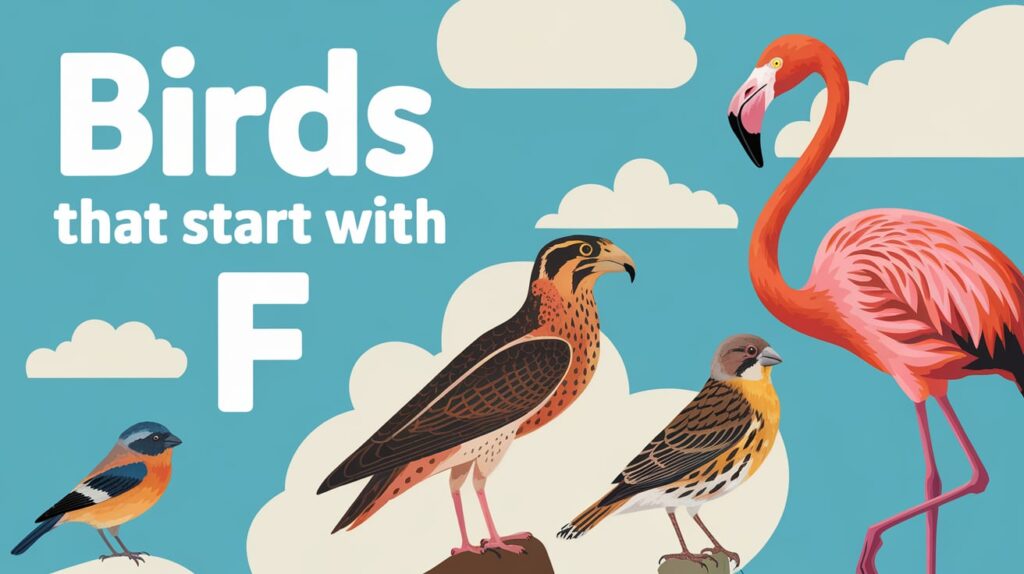Have you ever wondered about the fascinating world of birds that start with F?
From the swift Falcon, renowned for its incredible speed, to the colorful Firecrest, with its striking orange crest, these birds showcase a variety of unique traits that capture the imagination.
Whether you’re a zoologist, a birdwatcher, or a nature enthusiast, this blog will take you on a journey through the lives of these extraordinary birds.
Discover their habitats, behaviors, and their roles in our ecosystems.
Get ready to broaden your knowledge and appreciation of these amazing creatures as we explore 202 birds that begin with F.
20 Most Common Birds Starting with F
1. Falcon
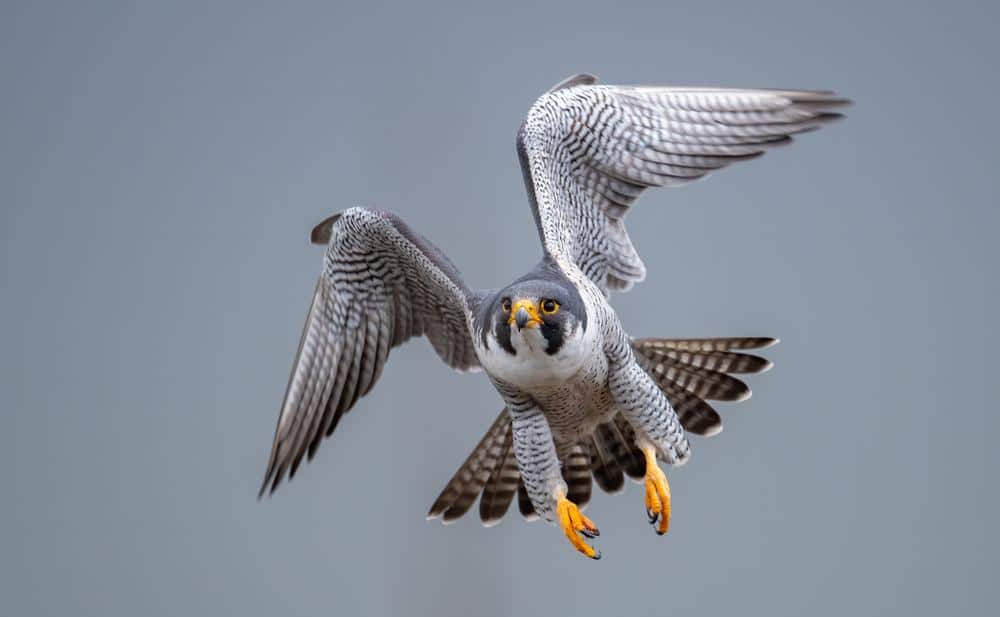
Falcons are powerful birds of prey known for their incredible hunting speed.
- Common Name and Scientific Name: Falcon, Falco spp.
- Physical Description: Sleek body with pointed wings and a hooked beak.
- Habitat: Varied, from arctic tundras to tropical forests.
- Geographical Range: Worldwide.
- Interesting Facts: Peregrine Falcons are the fastest animals on earth, reaching speeds over 240 mph during dives.
2. Fish Crow
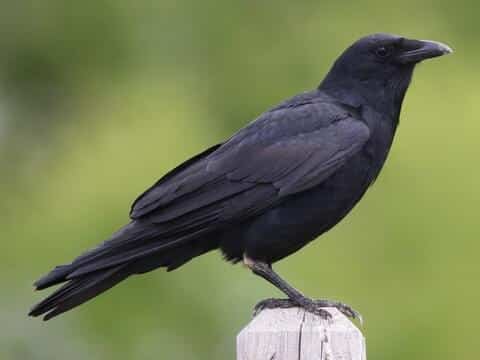
Fish Crows are smaller than the common crow and are often found near water bodies.
- Common Name and Scientific Name: Fish Crow, Corvus ossifragus
- Physical Description: Slightly smaller and sleeker than the common crow, with a more nasal call.
- Habitat: Coastal areas and near rivers.
- Geographical Range: Eastern and southeastern United States.
- Interesting Facts: Fish Crows can differentiate between edible and inedible items using their sense of smell, which is unusual for birds.
3. Ferruginous Hawk
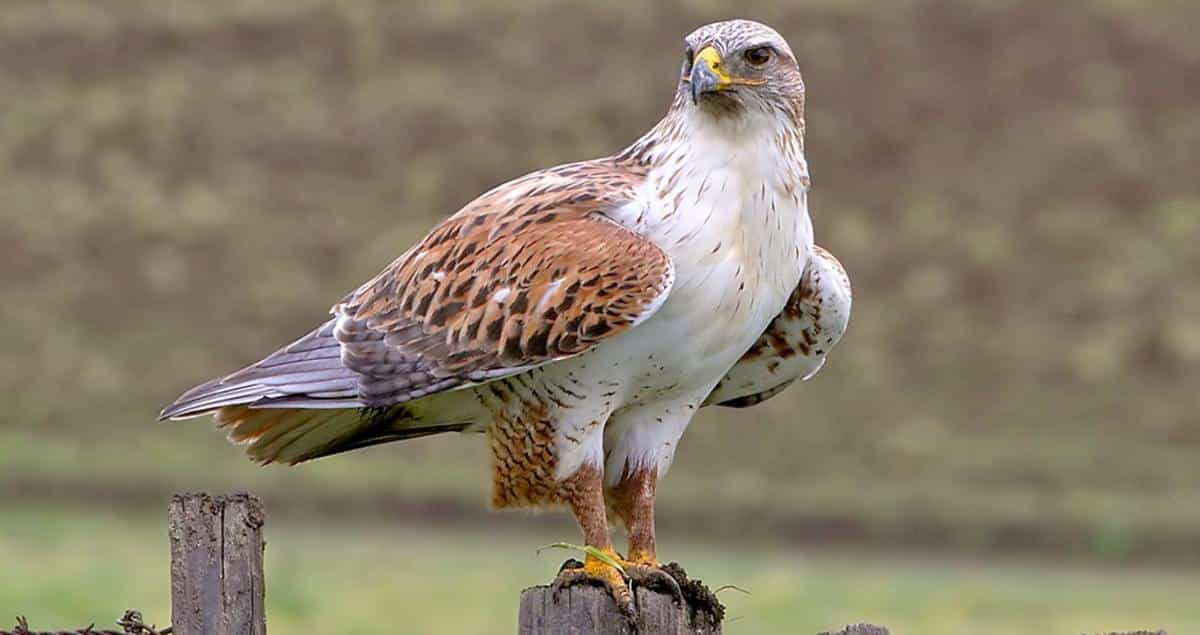
The Ferruginous Hawk is the largest North American hawk, known for its powerful build.
- Common Name and Scientific Name: Ferruginous Hawk, Buteo regalis
- Physical Description: Large hawk with rusty legs and pale body.
- Habitat: Open grasslands and prairies.
- Geographical Range: Central and western North America.
- Interesting Facts: Named for its rusty ferruginous coloration on its feathers.
4. Fork-tailed Flycatcher
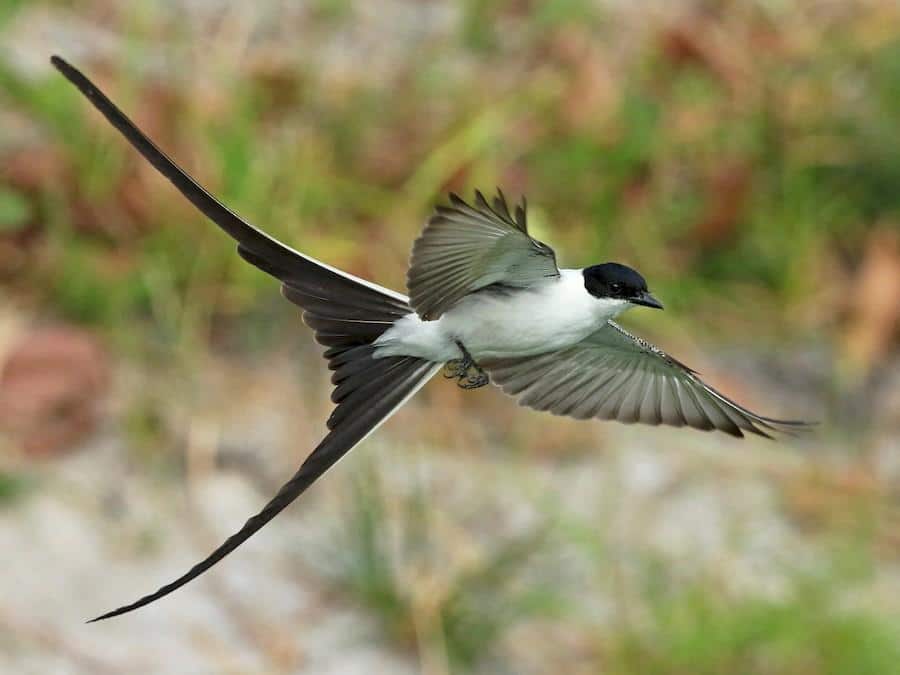
Fork-tailed Flycatchers are easily recognized by their long, split tails and agile flight.
- Common Name and Scientific Name: Fork-tailed Flycatcher, Tyrannus savana
- Physical Description: Blackcap, gray upperparts, and a white underbelly with a remarkably long, forked tail.
- Habitat: Open woodlands and savannas.
- Geographical Range: Central and South America.
- Interesting Facts: Males use their long tails as a part of display rituals to attract mates.
5. Fairy Tern
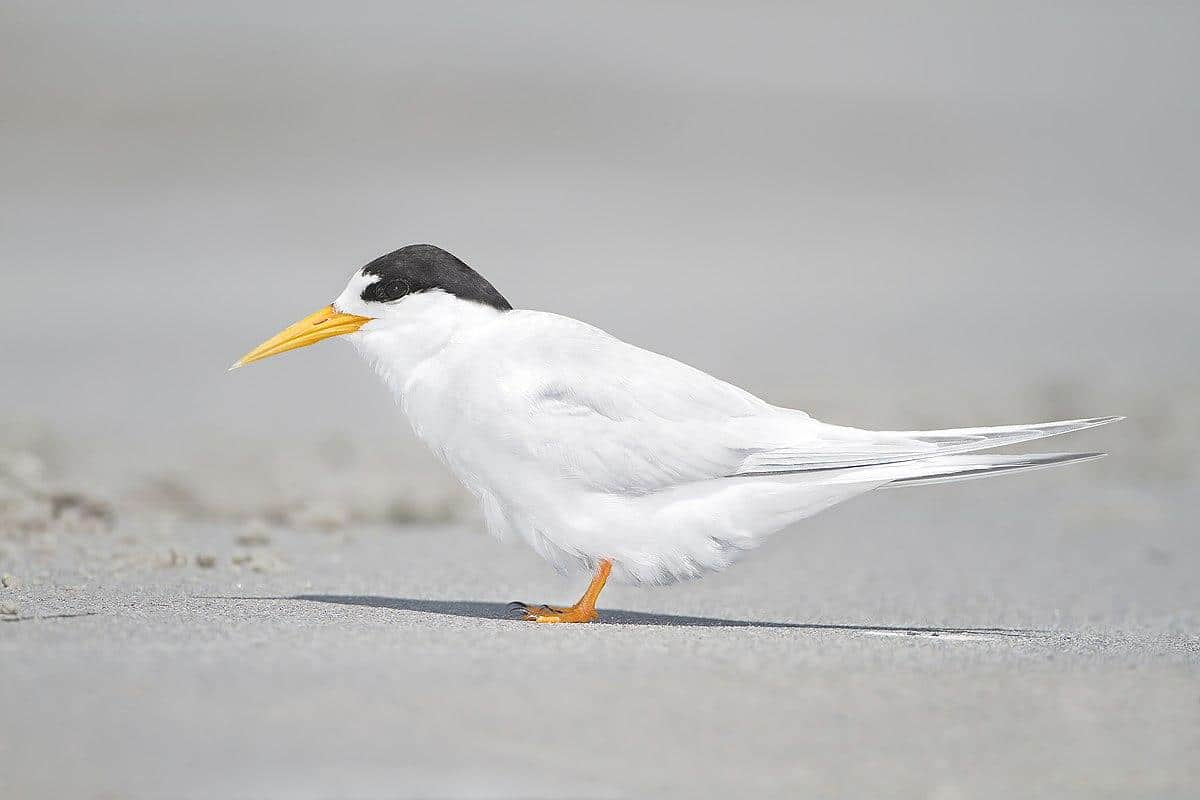
Fairy Terns are small terns famous for their graceful flight and pale plumage.
- Common Name and Scientific Name: Fairy Tern, Sternula nereis
- Physical Description: Small and pale, with a white body and pale grey wings.
- Habitat: Coastal areas, islands.
- Geographical Range: Widely distributed across the Indo-Pacific.
- Interesting Facts: Unlike most terns, Fairy Terns do not build nests; they lay their eggs directly on tree branches.
6. Frigatebird
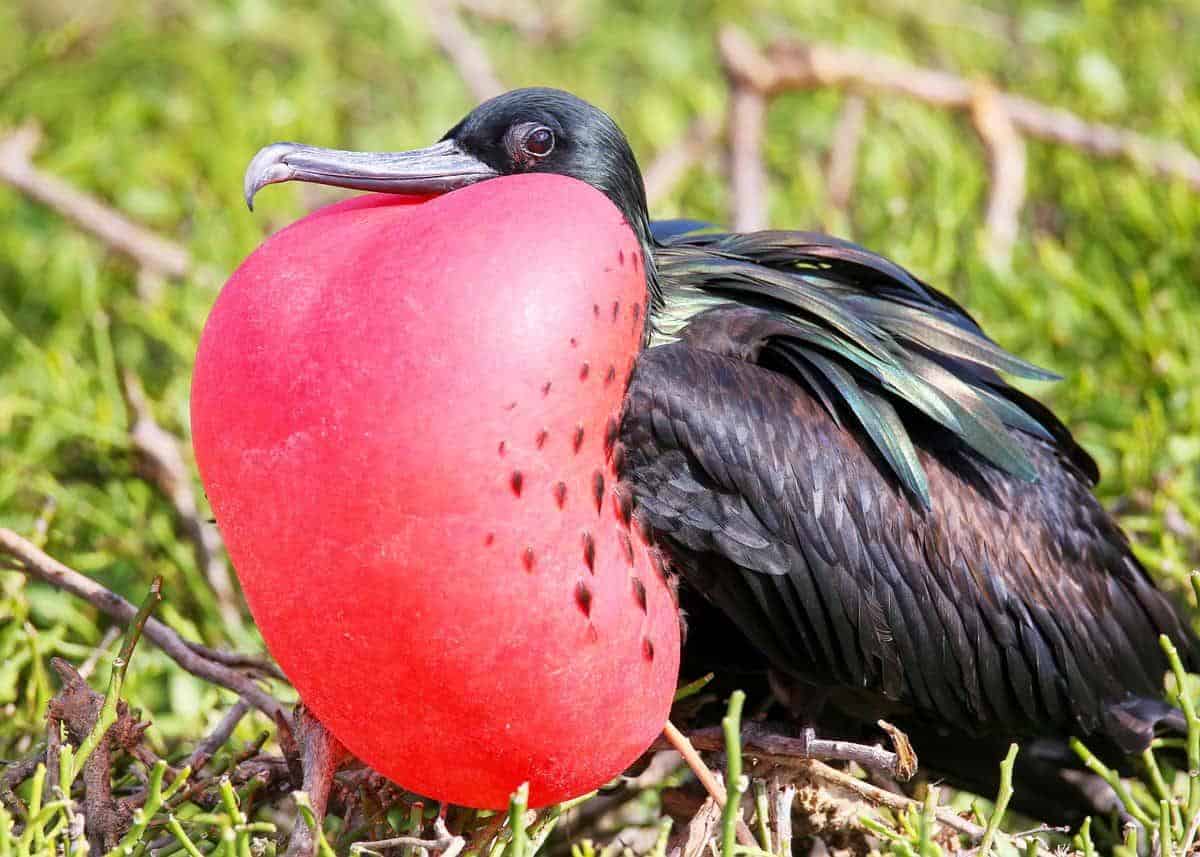
Frigatebirds are large seabirds known for their impressive wingspan and forked tails.
- Common Name and Scientific Name: Frigatebird, Fregata spp.
- Physical Description: Long wings and deeply forked tails, males have a distinctive red gular pouch.
- Habitat: Tropical and subtropical oceans.
- Geographical Range: Coastal regions around the world.
- Interesting Facts: Males inflate their red-throat pouches to attract females during breeding.
7. Fieldfare
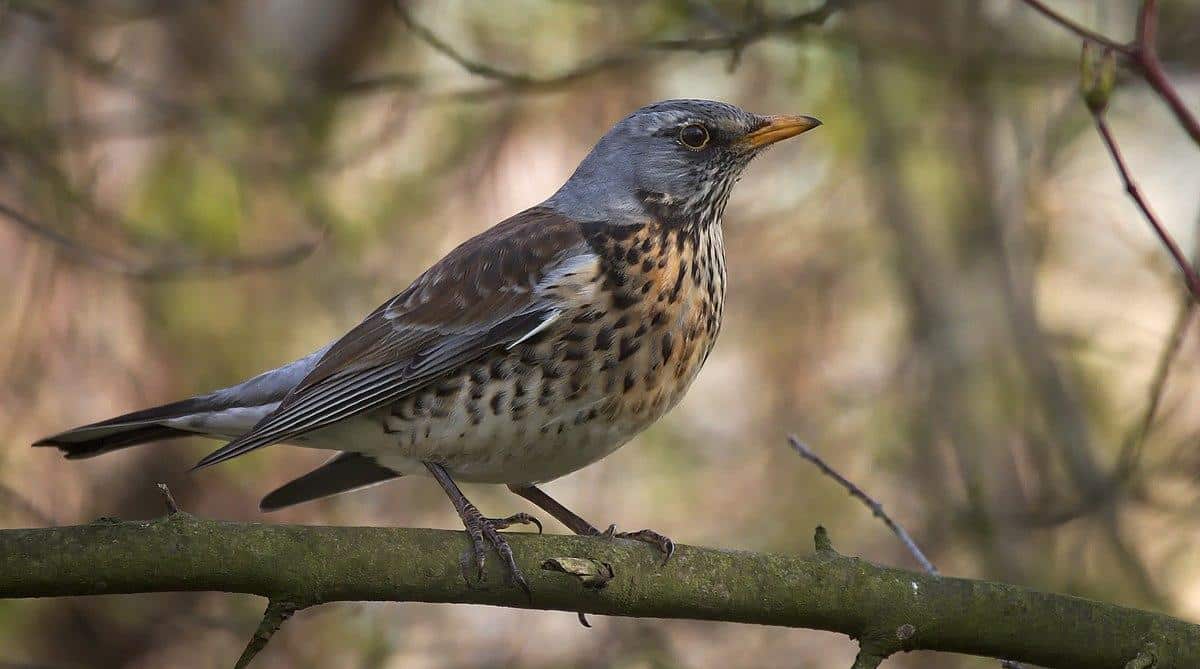
Fieldfares are robust, colorful thrushes, often seen in large flocks in winter.
- Common Name and Scientific Name: Fieldfare, Turdus pilaris
- Physical Description: Grey head, brown back, and a speckled breast.
- Habitat: Woodlands, fields, and gardens.
- Geographical Range: Europe and Asia; migratory to Northern Africa.
- Interesting Facts: Fieldfares are highly social during winter and fiercely defend their berries from other species.
8. Forest Kingfisher
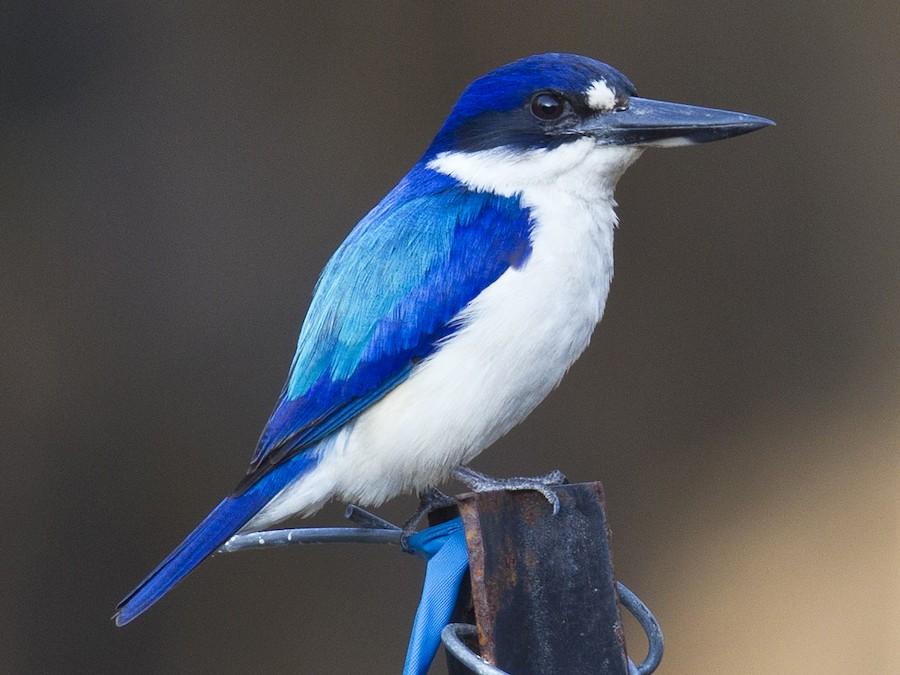
Known for its vivid blue and white plumage, the Forest Kingfisher is striking.
- Common Name and Scientific Name: Forest Kingfisher, Todiramphus macleayii
- Physical Description: Bright blue back with a white underbelly and a large bill.
- Habitat: Woodlands, forests, and mangroves.
- Geographical Range: Australia, New Guinea.
- Interesting Facts: Despite its name, it rarely eats fish and feeds on insects and small vertebrates.
9. Fawn-breasted Bowerbird
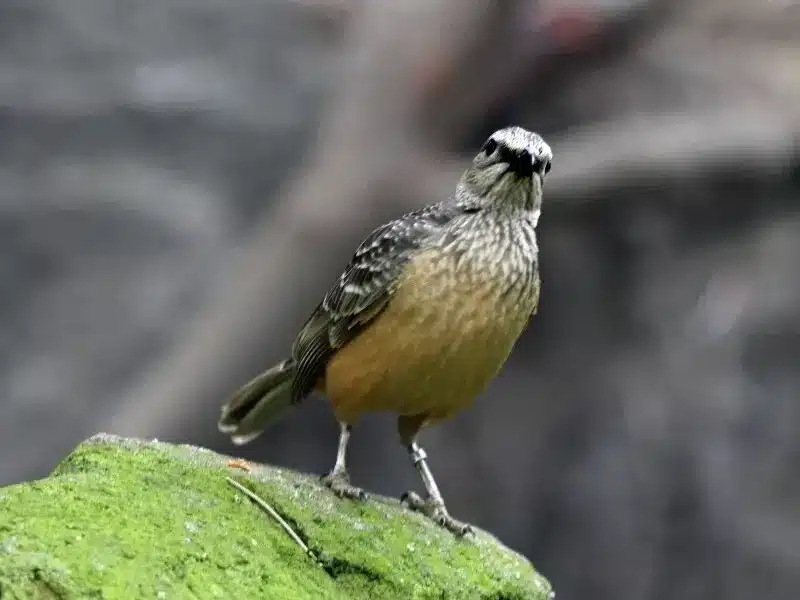
The Fawn-breasted Bowerbird is known for the intricate structures the males build to attract mates.
- Common Name and Scientific Name: Fawn-breasted Bowerbird, Chlamydera cerviniventris
- Physical Description: Fawn-colored breast and black body.
- Habitat: Tropical forests.
- Geographical Range: New Guinea.
- Interesting Facts: Their bowers are not nests for eggs but elaborate courtship arenas decorated with brightly colored objects.
10. Flame Robin
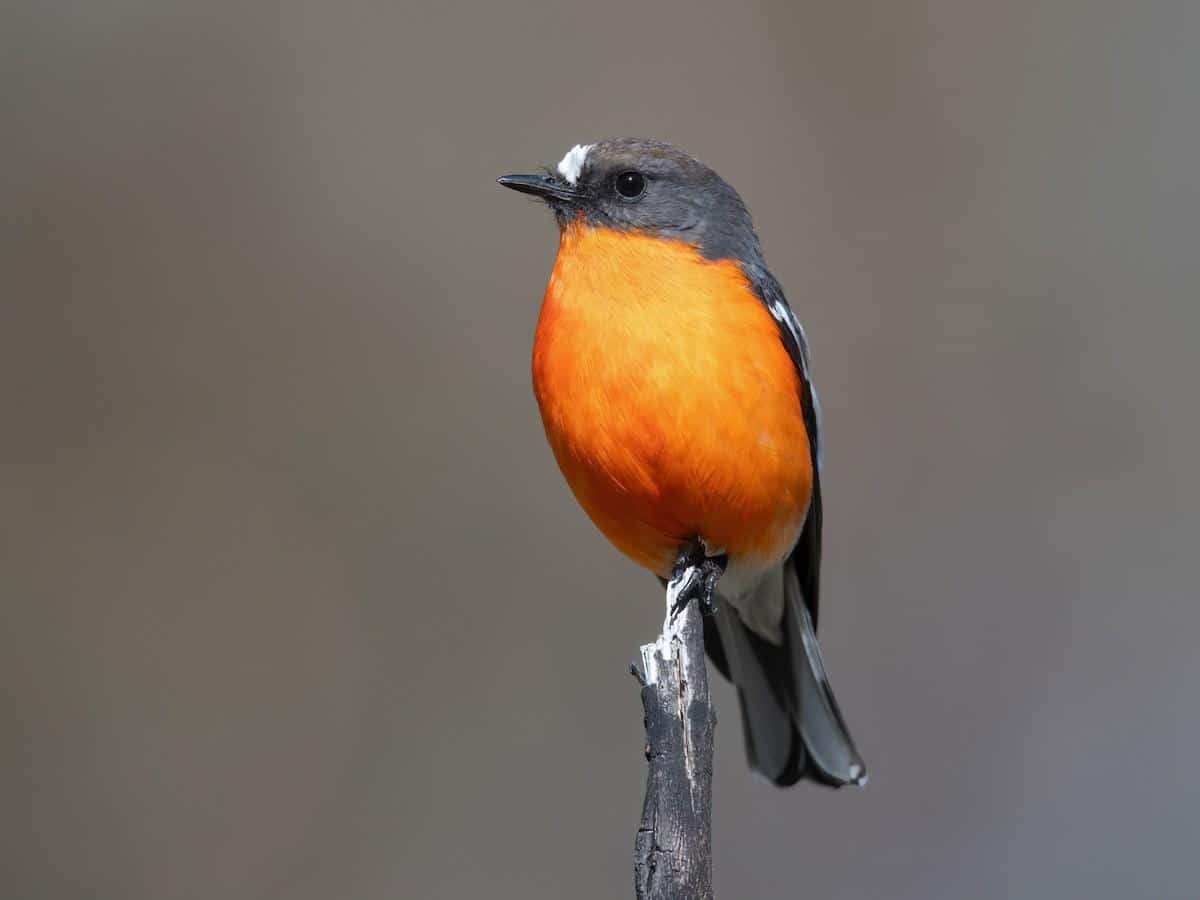
The Flame Robin is a small bird with a striking red breast, found primarily in cooler regions.
- Common Name and Scientific Name: Flame Robin, Petroica phoenicea
- Physical Description: Males have bright red breasts and dark upper bodies.
- Habitat: Open forests and woodlands.
- Geographical Range: Southeastern Australia.
- Interesting Facts: Unlike many other robins, Flame Robins are more visible and often perch openly.
11. Fulmar
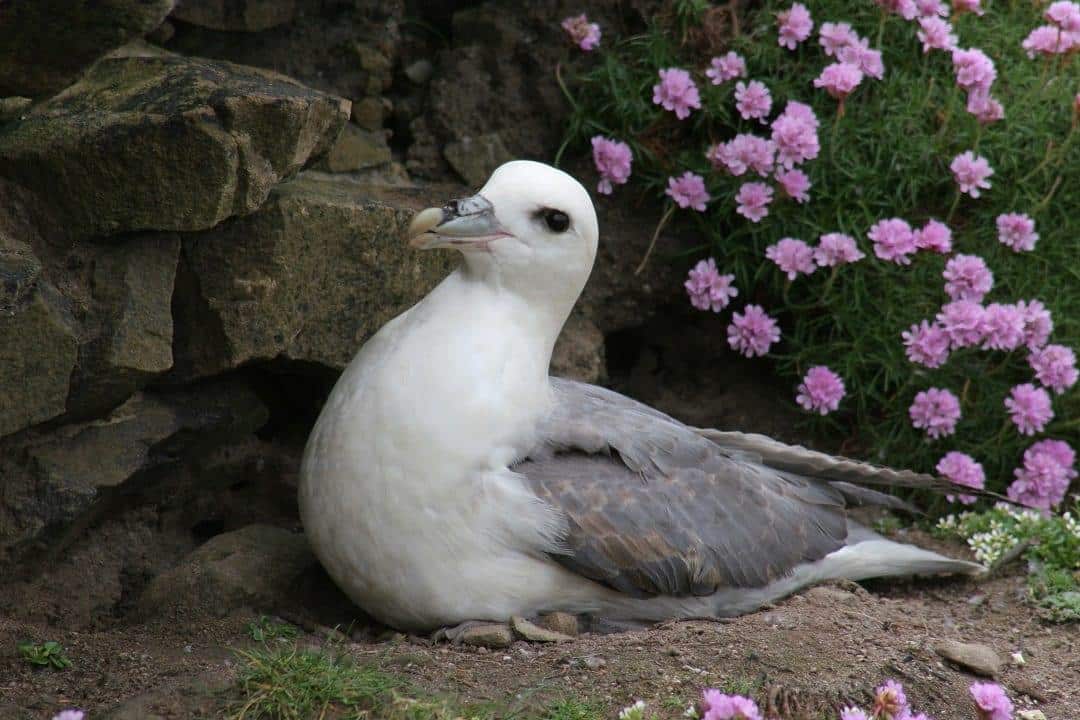
Fulmars are petrels that resemble gulls but are distinguished by their stiff-winged flight.
- Common Name and Scientific Name: Fulmar, Fulmarus glacialis
- Physical Description: Pale grey and white plumage; tube-like nostrils.
- Habitat: Open seas and cliff-top colonies.
- Geographical Range: Northern Atlantic and Pacific Oceans.
- Interesting Facts: Fulmars have a foul-smelling stomach oil that they use as a defense mechanism against predators.
12. Falcated Duck
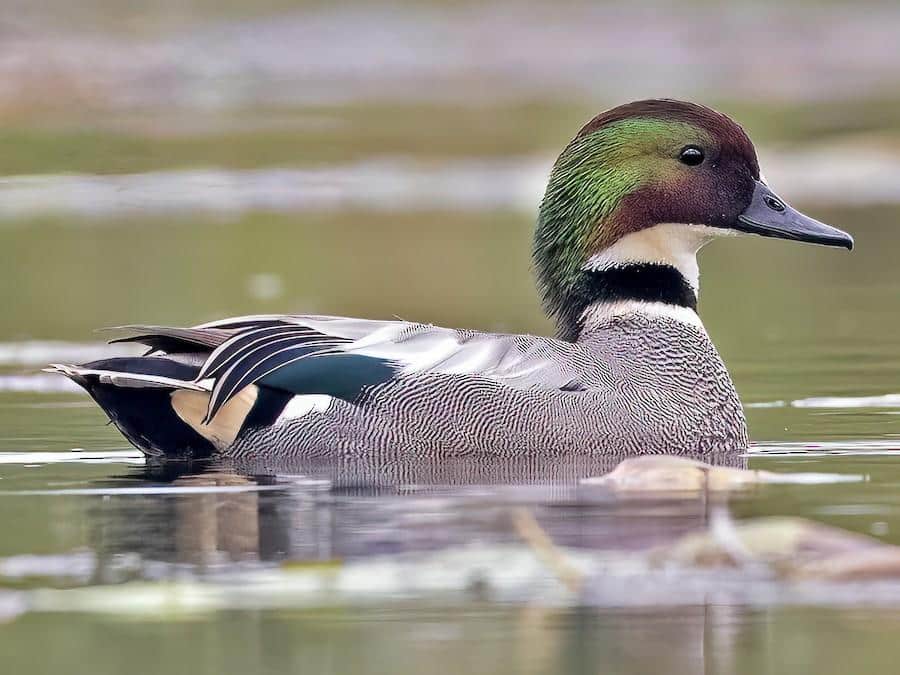
The Falcated Duck is noted for its beautiful sickle-shaped feathers and is a favorite among waterfowl enthusiasts.
- Common Name and Scientific Name: Falcated Duck, Mareca falcata
- Physical Description: Males have ornate, iridescent plumage and long, falcated tertials.
- Habitat: Lakes, marshes, and rivers.
- Geographical Range: Eastern Asia.
- Interesting Facts: “Falcated” refers to the curved shape of the male’s wing feathers.
13. Florida Scrub Jay
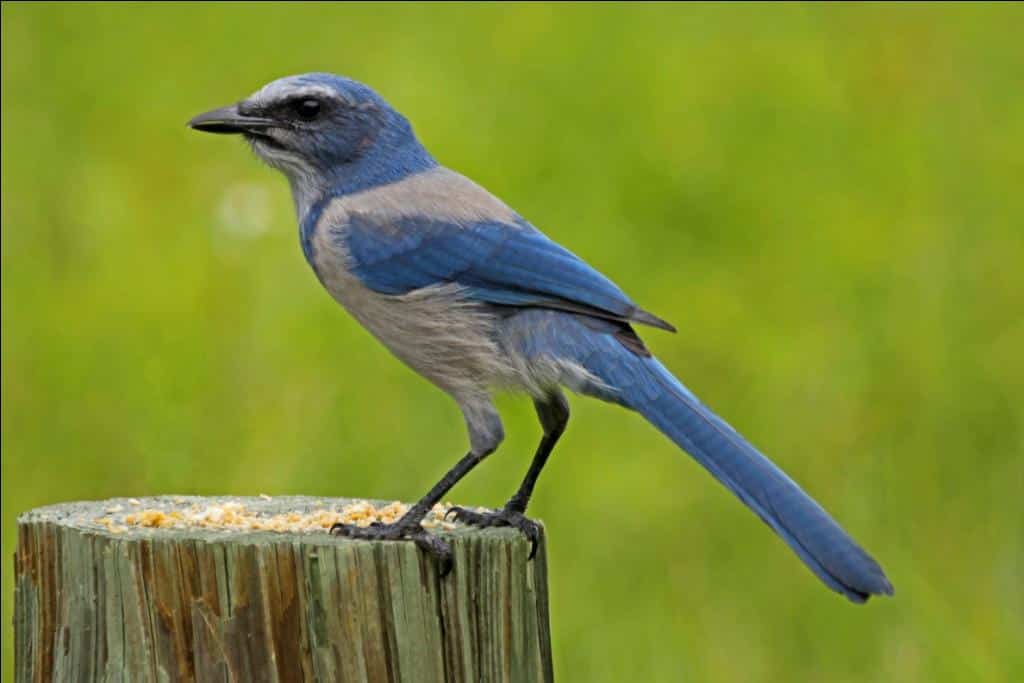
The Florida Scrub Jay is the only species of bird endemic to Florida. It is known for its curious and friendly nature.
- Common Name and Scientific Name: Florida Scrub Jay, Aphelocoma coerulescens
- Physical Description: Blue and gray plumage with no crest.
- Habitat: Scrub, sandy areas with low, scrubby vegetation.
- Geographical Range: Florida, USA.
- Interesting Facts: This bird is known for its unusual habit of using tools, such as twigs, to extract insects from bark.
14. Fiery-throated Hummingbird
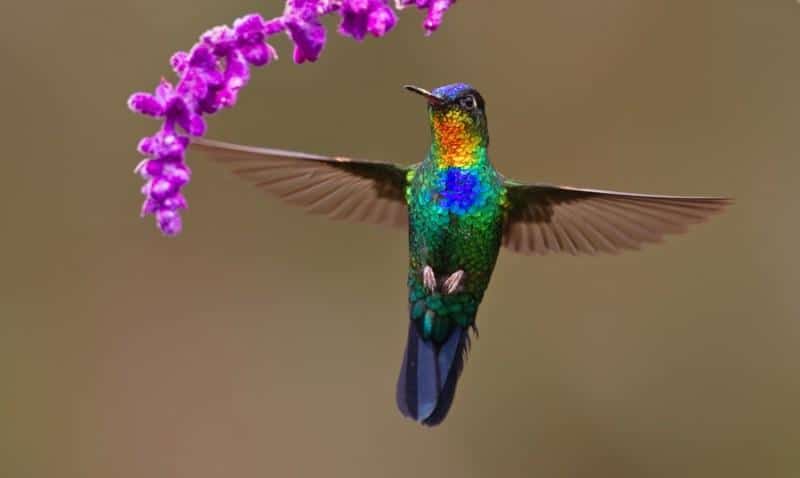
This small bird is known for its vibrant, iridescent throat patch that shines in the sunlight.
- Common Name and Scientific Name: Fiery-throated Hummingbird, Panterpe insignis
- Physical Description: Small with a brilliant blue, green, and orange throat.
- Habitat: Montane forests.
- Geographical Range: Mountainous regions of Costa Rica and western Panama.
- Interesting Facts: The fiery-throated hummingbird’s color can only be seen when light hits it at the right angle; otherwise, it looks dark.
15. Ferruginous Pygmy-Owl
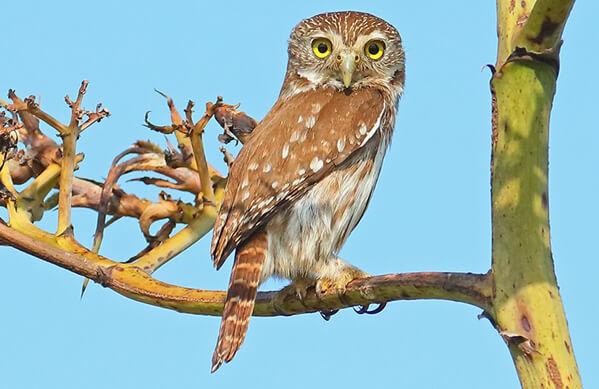
The Ferruginous Pygmy Owl is a small but fierce predator known for its stamina in hunting during the day and at dusk.
- Common Name and Scientific Name: Ferruginous Pygmy-Owl, Glaucidium brasilianum
- Physical Description: Brown and white streaked plumage with false “eye” spots on the back of the head.
- Habitat: Woodlands and open forests.
- Geographical Range: Americas, from the southern USA to northern Argentina.
- Interesting Facts: Despite its size, it can take prey up to three times its weight.
16. Flycatcher
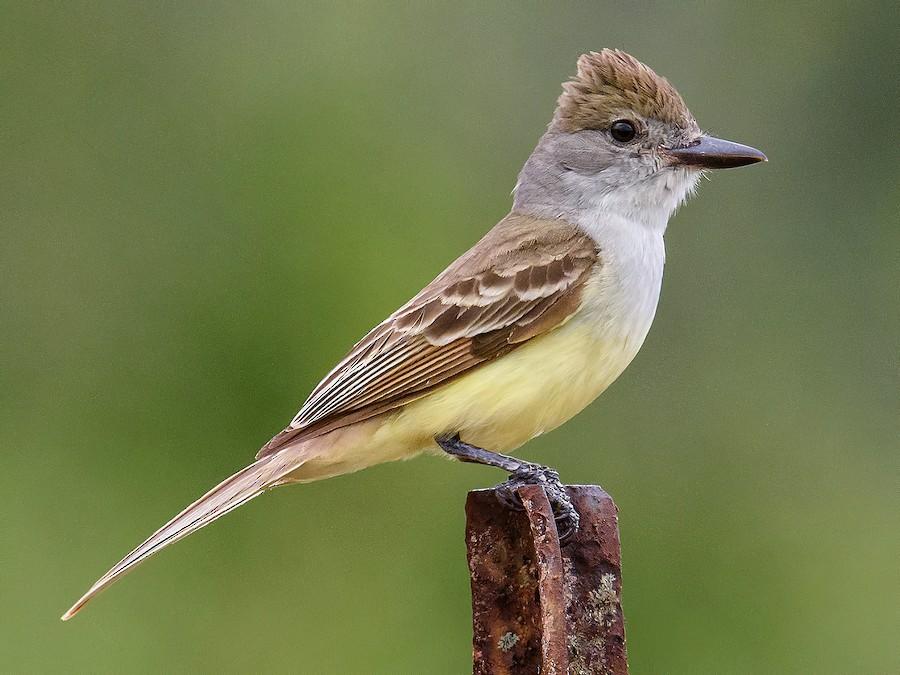
Flycatchers are a diverse group of insectivorous birds known for their aerial feeding tactics.
- Common Name and Scientific Name: Flycatcher, Various spp.
- Physical Description: Generally small, with large flat bills, pointed wings, and short legs.
- Habitat: Varied, from dense forests to open fields.
- Geographical Range: Worldwide.
- Interesting Facts: The name “flycatcher” covers over 400 species, each with unique hunting and vocalization styles.
17. Firecrest
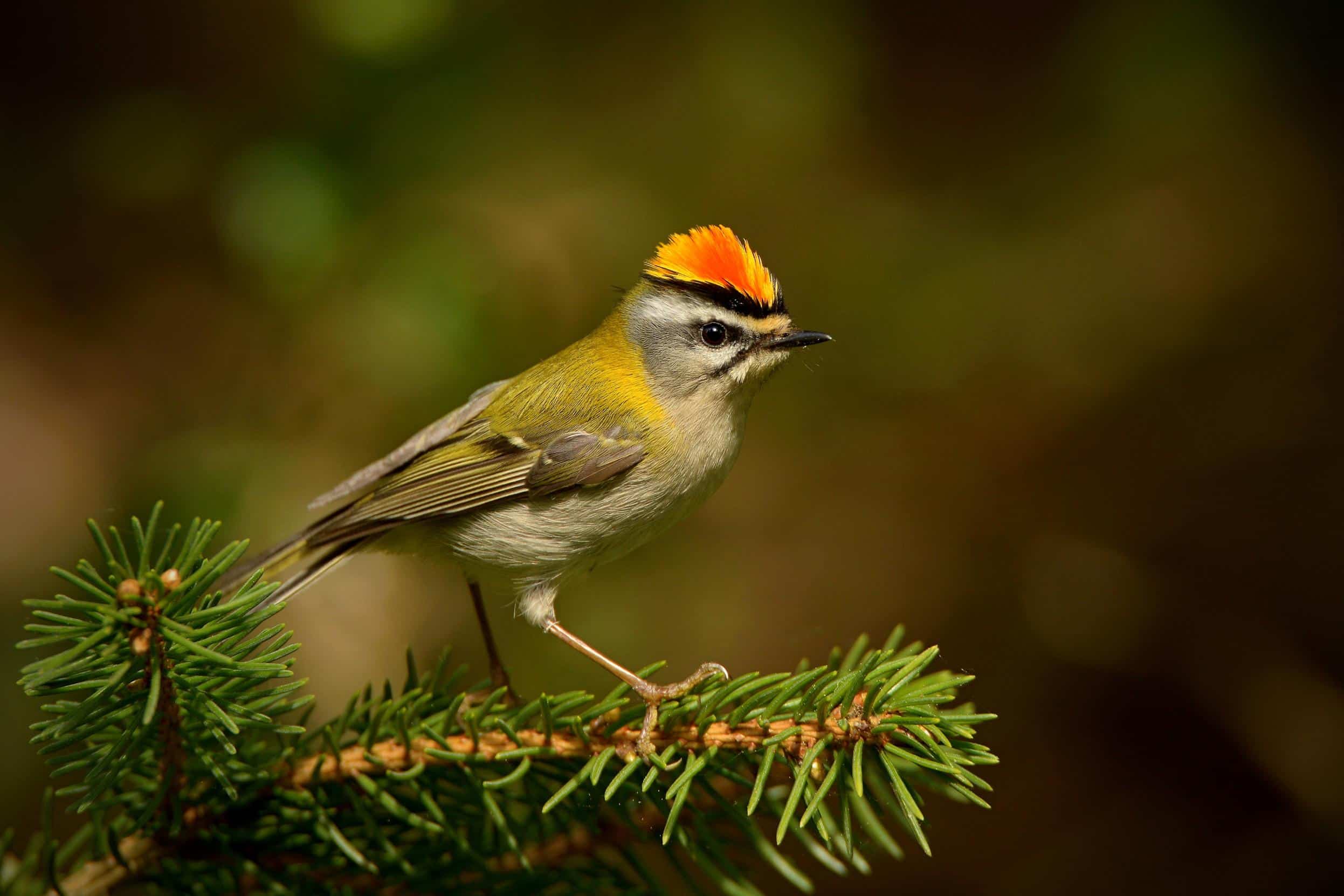
The Firecrest is one of Europe’s smallest birds, recognized by the striking orange crest on its head.
- Common Name and Scientific Name: Firecrest, Regulus ignicapilla
- Physical Description: Tiny bird with green upperparts and a fiery orange crest surrounded by black.
- Habitat: Coniferous woodlands and mixed forests.
- Geographical Range: Europe, particularly central and southern parts.
- Interesting Facts: Firecrests are highly territorial, especially during breeding season.
18. Flammulated Owl
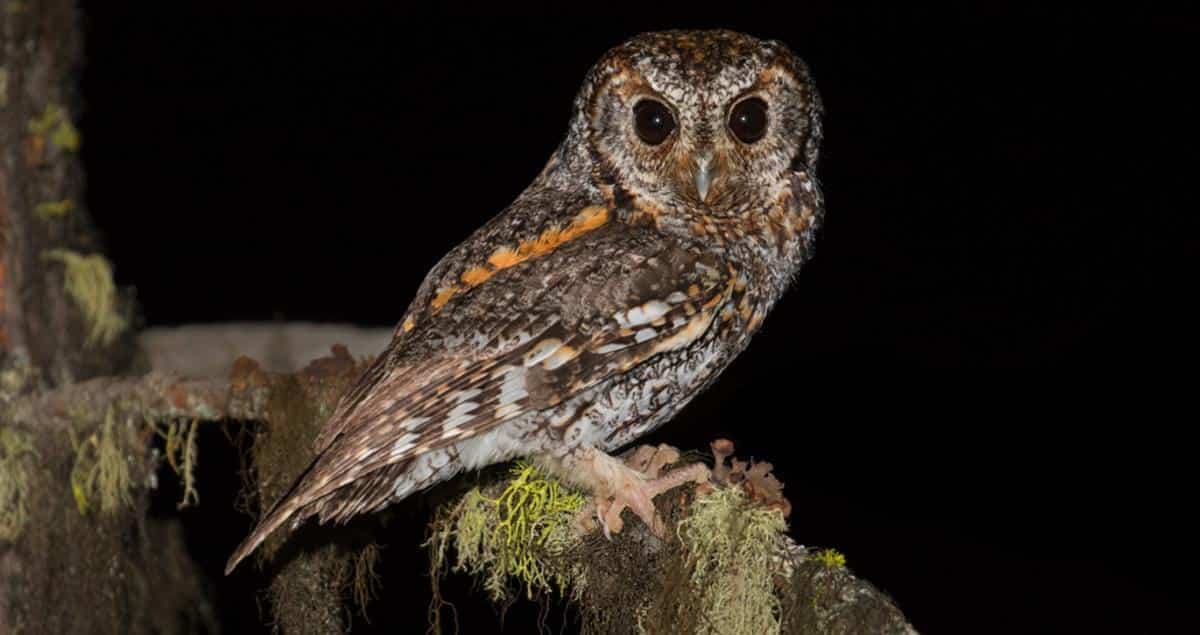
This small, elusive owl is known for its camouflaged plumage that blends perfectly into the bark of trees.
- Common Name and Scientific Name: Flammulated Owl, Psiloscops flammeolus
- Physical Description: Small owl with dark, cryptic plumage mimicking the tree bark pattern.
- Habitat: Pine forests.
- Geographical Range: North America, from southern Canada to the western United States.
- Interesting Facts: Despite its presence across North America, it is rarely seen due to its nocturnal habits and excellent camouflage.
19. Fischer’s Lovebird
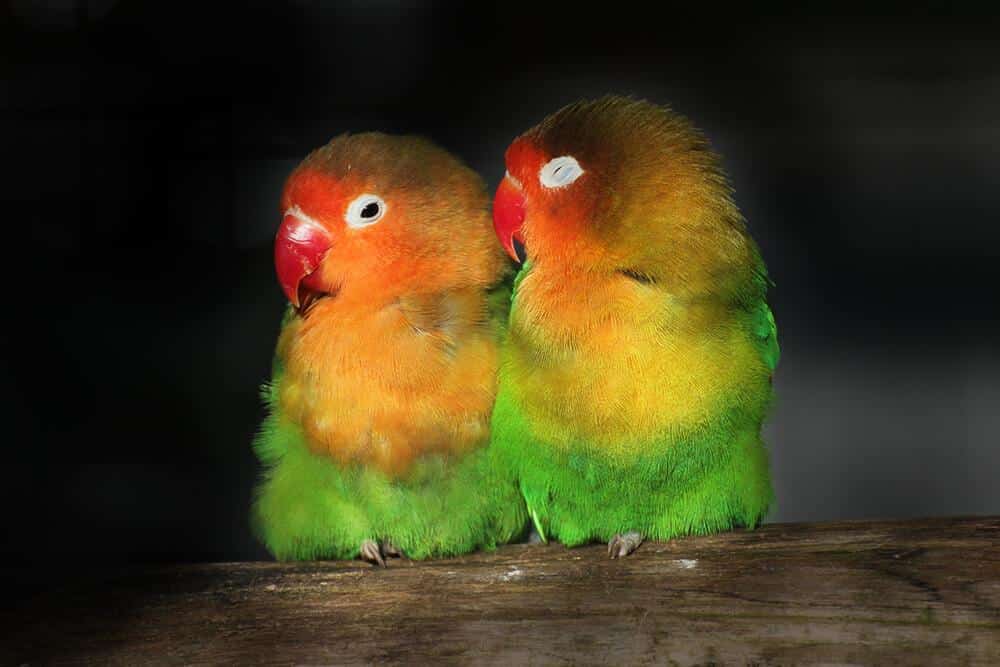
Fischer’s Lovebird is a small, colorful parrot, often seen in pairs and known for its strong pair bonding.
- Common Name and Scientific Name: Fischer’s Lovebird, Agapornis fischeri
- Physical Description: Bright green body, orange neck and head, and blue rump.
- Habitat: Open woodlands and grasslands.
- Geographical Range: Native to a small area of east-central Africa.
- Interesting Facts: These birds are named after German explorer Gustav Fischer.
20. Fox Sparrow
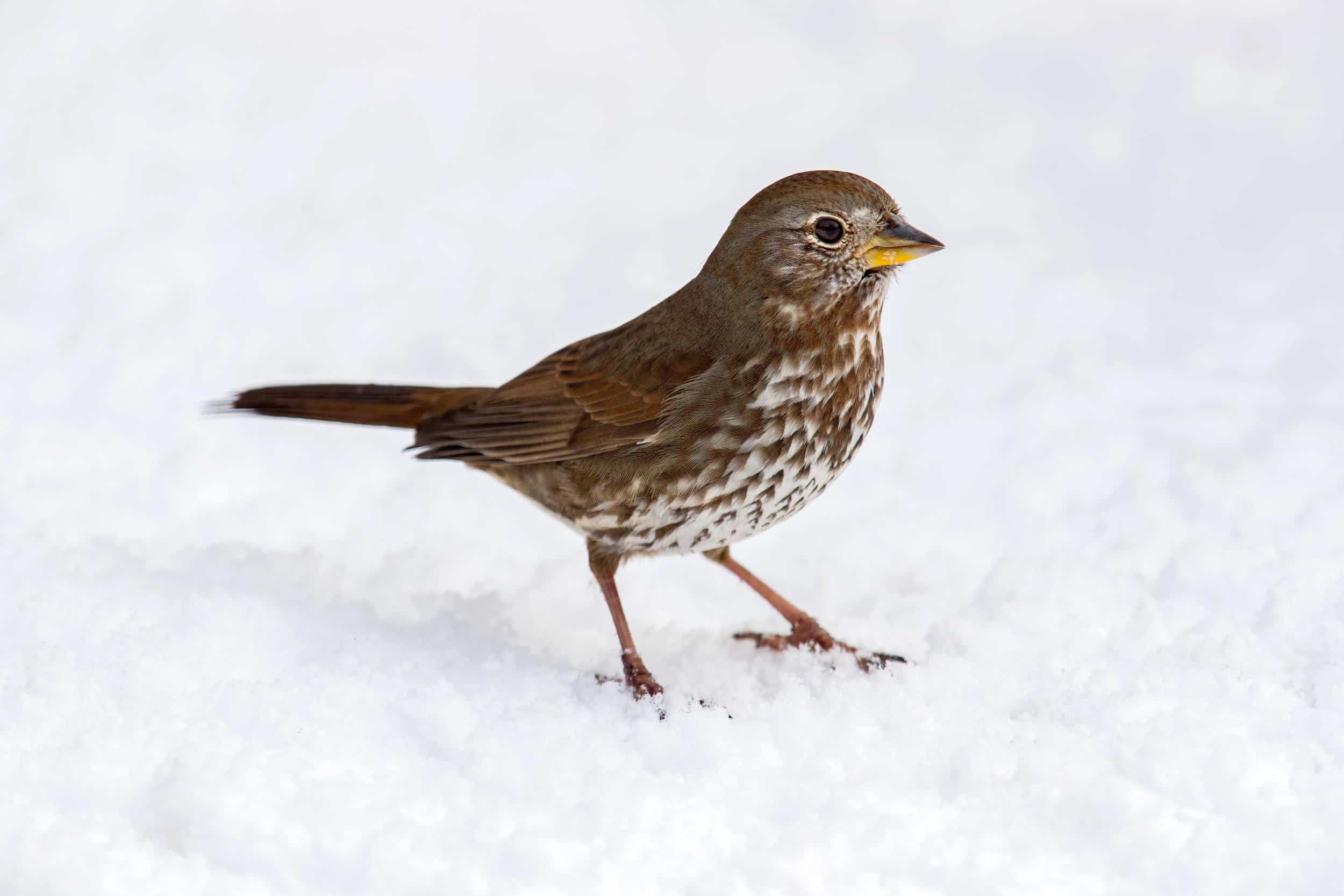
Fox Sparrows are large sparrows known for their rich, reddish-brown plumage and beautiful singing voice.
- Common Name and Scientific Name: Fox Sparrow, Passerella iliaca
- Physical Description: Heavily spotted with thick streaks and a rich rufous tail.
- Habitat: Thick underbrush, wooded areas.
- Geographical Range: North America, particularly in Canada and the northern United States.
- Interesting Facts: There are four distinct forms of Fox Sparrow, each varying slightly in color and habitat preference.
182 Additional Birds Starting with F
- Fan-tailed Cuckoo
- Flame-colored Tanager
- Forest Robin
- Fiji Parrotfinch
- Fraser’s Eagle-Owl
- Fulvous Whistling Duck
- Forest Batis
- Fawn-breasted Tanager
- Fork-tailed Swift
- Fawn-colored Lark
- Finch-billed Bulbul
- Flat-billed Kingfisher
- Fawn-breasted Brilliant
- Flame-throated Warbler
- Forster’s Tern
- Four-colored Bushshrike
- Freckled Duck
- Fawn-collared Honeyeater
- Forest Thrush
- Fan-tailed Gerygone
- Fiery-browed Starling
- Forest Canary
- Fawn-colored Thrush
- Fiji Goshawk
- Fulvous Parrotbill
- Forest Falcon
- Fatu Hiva Monarch
- Finch’s Bulbul
- Flat-billed Vireo
- Flame-templed Babbler
- Fiji Woodswallow
- Fiery-billed Aracari
- Finsch’s Francolin
- Forbes’s Plover
- Flame-capped Manakin
- Forest Francolin
- Fulvous Owl
- Frigate Tern
- Frill-necked Monarch
- Fawn-breasted Weaver
- Fan-tailed Widowbird
- Forest Owlet
- Freckle-breasted Woodpecker
- Fan-tailed Raven
- Fiery-tailed Awlbill
- Forest Rock Thrush
- Fork-tailed Storm Petrel
- Fan-tailed Drongo
- Fawn-crowned Tanager
- Ferruginous Antbird
- Flame-breasted Sunbird
- Forbes’s Blackbird
- Forest Flycatcher
- Fiery Topaz
- Fan-tailed Warbler
- Fringe-backed Fire-eye
- Ferruginous Partridge
- Flat-billed Shortwing
- Flame-headed Parrotbill
- Fairy Flycatcher
- Forest Honeyeater
- Fiji White-eye
- Fawn-crowned Pitta
- Freckle-headed Hornbill
- Fan-tailed Cisticola
- Flame-throated Sunangel
- Finsch’s Wheatear
- Forest Sicklewing
- Fork-billed Hermit
- Fiery-capped Manakin
- Fraser’s Sunbird
- Fawn-colored Spinetail
- Forest Swallow
- Freckled Owlet
- Fiji Ground Dove
- Fan-tailed Sunbird
- Flame-browed Warbler
- Ferruginous Duck
- Fork-tailed Drongo Cuckoo
- Frilled Coquette
- Fulvous-chinned Nunlet
- Forest Chestnut-winged Babbler
- Flat-headed Myzomela
- Fan-throated Flycatcher
- Fiji Warbler
- Forest Babbler
- Flame-crest Sunbird
- Finsch’s Barbet
- Fork-tailed Hummingbird
- Fiery-necked Nightjar
- Flat-billed Puffbird
- Fulvous-bellied Antpitta
- Falkland Steamerduck
- Fairy Prion
- Fork-tailed Whydah
- Forest Coucal
- Frosty-bellied Hummingbird
- Fawn-colored Falconet
- Flame-rumped Tanager
- Forbes’s Silverbill
- Frilled Monarch
- Fiery-browed Myna
- Forest Nightjar
- Fuscous Honeyeater
- Fork-tailed Swiftlet
- Flat-billed Nighthawk
- Flame-breasted Flowerpecker
- Fawn-breasted Sparrowhawk
- Fulvous-crowned Flycatcher
- Fatu Hiva Petrel
- Forest Tanager
- Ferruginous Goshawk
- Freckled Stork
- Fairy Lorikeet
- Forbes’s Black-headed Weaver
- Flat-capped Parakeet
- Fan-tailed Roller
- Fiery-fronted Parakeet
- Fulvous Shrike-tanager
- Fraser’s Antthrush
- Fawn-breasted Fantail
- Flat-billed Shrike-tanager
- Fiery-throated Antwren
- Forest Pitta
- Fringed-throated Parrotlet
- Forbes’s Bluebird
- Fork-tailed Gull
- Flat-backed Sandgrouse
- Finsch’s Owl
- Fawn-headed Pigeon
- Forest Wren-babbler
- Finsch’s Swamp Warbler
- Frogmouth
- Fraser’s Wren
- Fulvous-crested Tanager
- Flame-throated Barbet
- Forest Woodpecker
- Fan-throated Barbet
- Fork-tailed Puffbird
- Fulvous-capped Antshrike
- Falcated Petrel
- Fairy Martin
- Flat-billed Palm-swift
- Flame-winged Warbler
- Fawn-faced Lark
- Fork-tailed Parrotbill
- Fringed-feathered Mynah
- Flat-billed Flycatcher
- Fulvous-capped Manakin
- Ferruginous Treecreeper
- Fawn-colored Robin
- Forest Barbet
- Flat-faced Finch
- Fulvous Shrike
- Frilled Warbler
- Fork-tailed Swift-tanager
- Fulvous Parrot-finch
- Forest Shrike
- Frigate Kingfisher
- Flat-billed Flycatcher
- Fork-tailed Starling
- Fan-throated Weaver
- Ferruginous Finch
- Forest Thrush-tanager
- Fringe-winged Manakin
- Fijian White-eye
- Flat-headed Vireo
- Fork-tailed Woodnymph
- Fan-tailed Pewee
- Flame-breasted Nightjar
- Fiji Blue-faced Parrotfinch
- Forest Bluebird
- Flat-billed Robin
- Frilled Antwren
- Fawn-colored Finch
- Flame-shouldered Sunbird
- Flat-headed Swallow
- Fan-breasted Warbler
- Fork-tailed Magpie
- Forest Bunting
- Flat-billed Nightingale
- Freckle-breasted Woodpecker
Summing Up
In this blog, we explored a diverse group of birds that start with F, highlighting their distinct characteristics and habitats.
From the fast and fierce Falcon to the small and vibrant Firecrest, we discovered how each bird adapts to its environment.
We learned about their feeding habits, nesting behaviors, and the incredible migration journeys some undertake.
This glimpse into their world shows birds’ remarkable diversity and beauty, enhancing our understanding and appreciation of nature.
Continue to follow us for more insights into the fascinating lives of different bird species and deepen your connection with the natural world around us.


